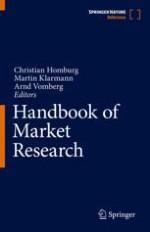2022 | OriginalPaper | Chapter
Cluster Analysis in Marketing Research
Authors : Thomas Reutterer, Daniel Dan
Published in: Handbook of Market Research
Publisher: Springer International Publishing
Activate our intelligent search to find suitable subject content or patents.
Select sections of text to find matching patents with Artificial Intelligence. powered by
Select sections of text to find additional relevant content using AI-assisted search. powered by
Abstract
R ecosystem for statistical computing. A substantial part of this chapter is devoted to the illustration of applying different clustering procedures to a reference data set of shopping basket data. We briefly outline the general approach of the considered techniques, provide a walk-through for the corresponding R code required to perform the analyses, and offer some interpretation of the results.